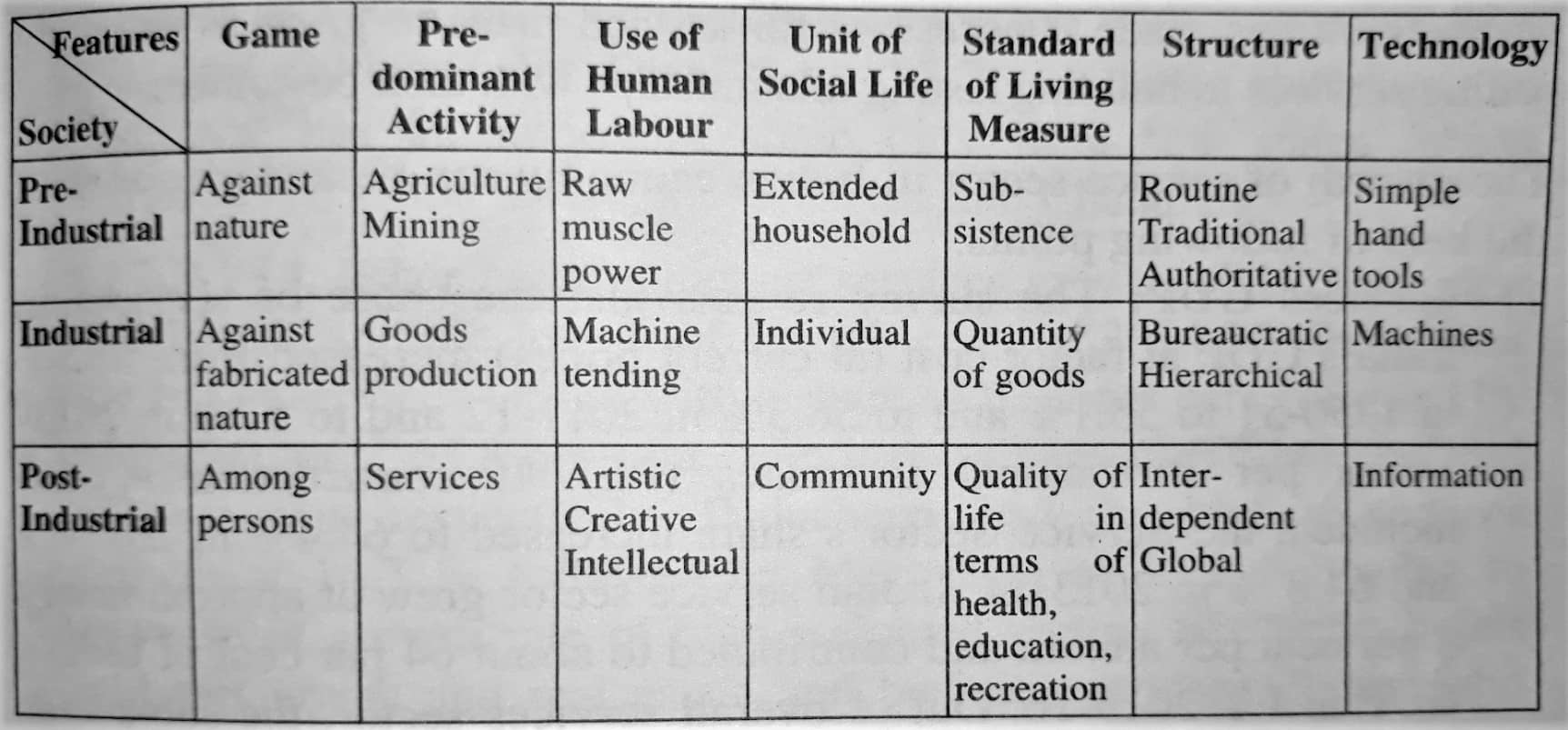The various stages through which the service economy has evolved are as follows:
1. Pre-Industrial Stage
Life was characterized as a game against nature. Working with muscle power and tradition, the labour force had been engaged in agriculture, mining, and fishing. Life was conditioned by the elements, such as the weather, soil quality, and water availability. The rhythm of life was shaped by nature, and the pace of work varied with the seasons.
Productivity had been low and bore little evidence of technology. Social life revolves around the extended household, and this combination of low productivity and a large population results in high rates of underemployment (workers not fully utilized). Many seek positions in services but of the person or household variety. Pre-industrial societies are agrarian and structured around tradition, routine, and authority.
2. Industrial Stage
The period between the 18th and 19th centuries is regarded as the industrial revolution era world over. There were many inventions, new transportation modes, technological breakthroughs, and scientific discoveries during this period, especially in European countries.
The predominant activity in industrial society was the production of goods. The focus of attention was on making more with less. Energy and machines multiplied the output per labour hour and structured the nature of work. Work is accomplished in the artificial environment of the factory, and people tend the machines.
The rhythm of life is machine-paced and dominated by rigid working hours and time clocks. The standard of living becomes measured by the quantity of goods, but note that the complexity of coordinating the production and distribution of goods results in the creation of large bureaucratic and hierarchic organizations.
These organizations are designed with specific roles for their members, and their operation tends to be impersonal, with persons treated as things.
3. Post-Industrial Society
While an industrial society defines the standard of living by the quantity of goods, a post-industrial society is more concerned with the quality of life, measured by services such as health, education, and recreation. The central figure is the professional individual, as information becomes the key resource over energy or physical strength.
After the 19th century, when major industries were already established, and people’s incomes were projected to increase, their needs became more “materialistic.” They began to demand more services in sectors such as health, education, and entertainment.
According to Bell, “The transformation from an industrial to a post-industrial society occurs in many ways.”
- The natural progression of services, such as transportation and utilities, supports industrial development. As labour-saving devices are integrated into the production process, a larger workforce engages in non-manufacturing activities like maintenance and repair.
- Population growth and mass consumption of goods lead to an increase in wholesale and retail trade, banking, real estate, and insurance.
- As income rises, the proportion spent on food and home necessities decreases, thus creating a demand for durable goods followed by services.
According to Ernst Engel, a Prussian statistician from the 19th century, “As family incomes increase, the percentage spent on food and durables drops while consumption of services that reflect a desire for a more enriched life increases correspondingly.”
This phenomenon is similar to Maslow’s hierarchy of needs, which proposes that once the basic requirements are met, higher-level needs become the focus.
Higher education becomes a prerequisite for entry into a post-industrial society, which demands the professional and technical skills of its population. Furthermore, the demand for more services and social justice fuels the growth of government.
The need for environmental protection necessitates government intervention, illustrating the interdependent and even global nature of post-industrial problems. The table provided above summarises the distinctive features of the pre-industrial, industrial, and post-industrial stages of economic development.
